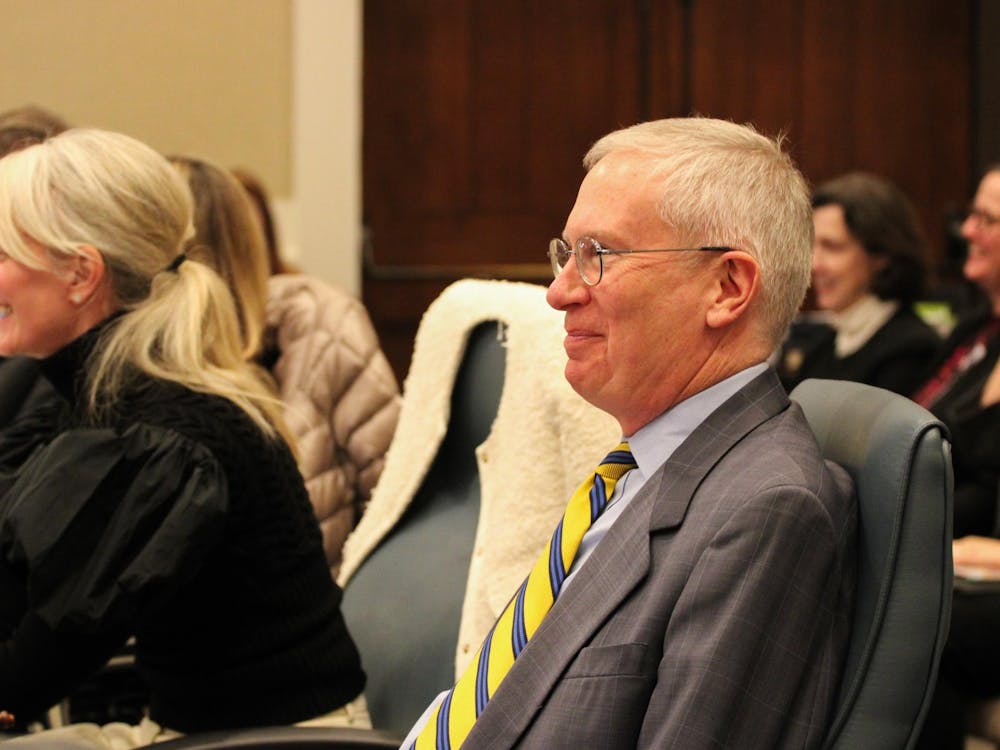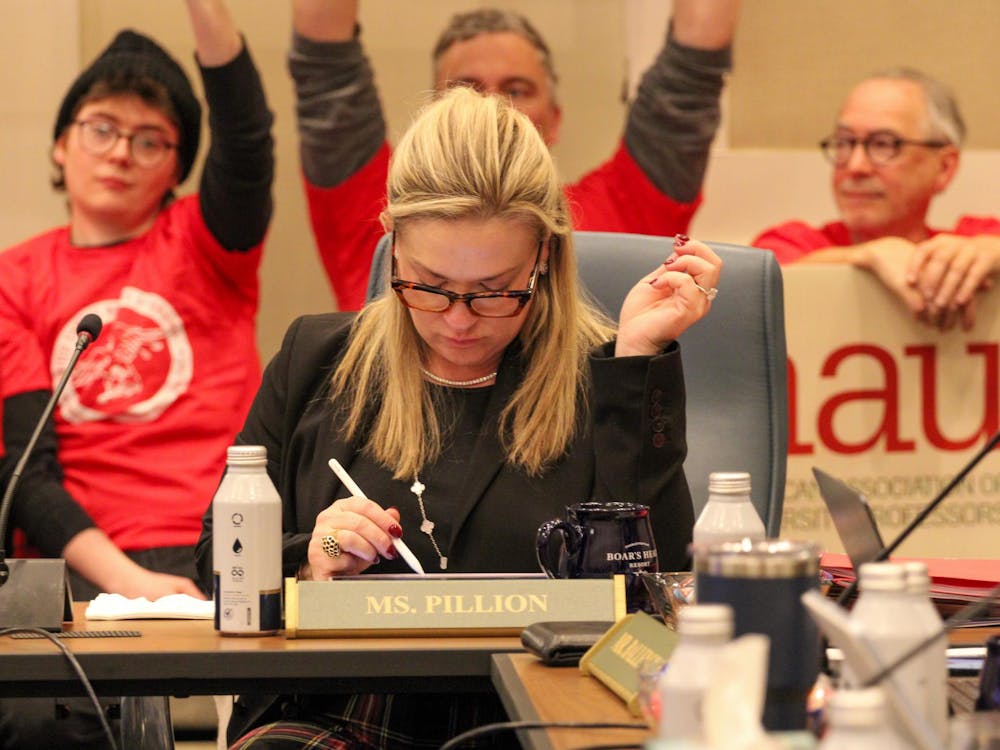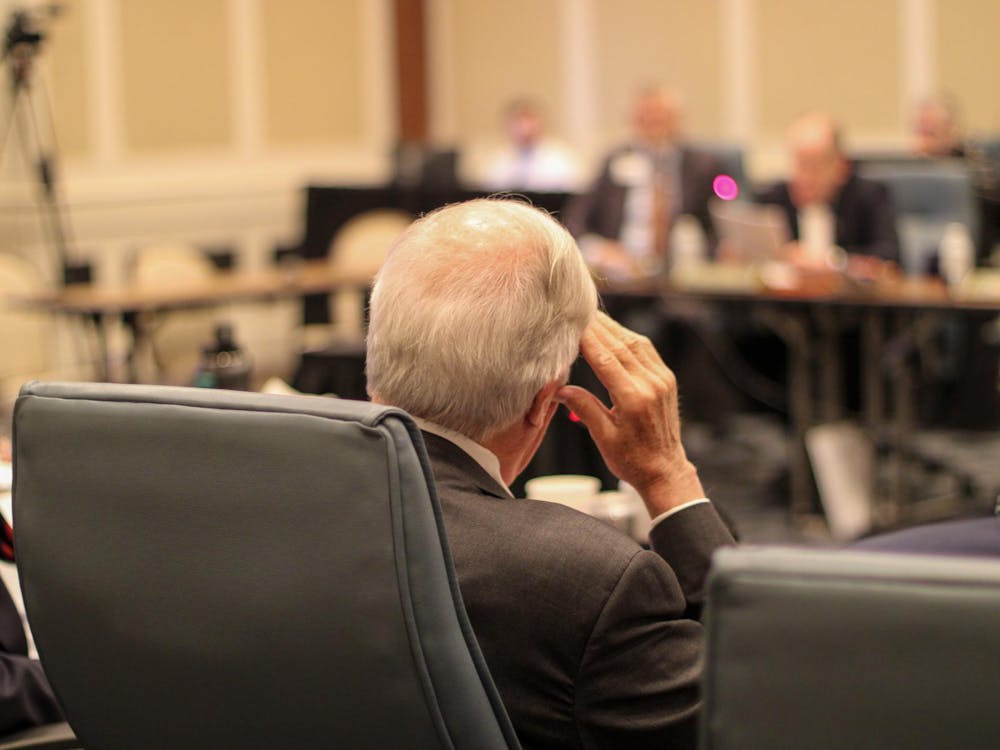Hoping to bridge the divide between technology and the arts, the University is hosting Technosonics, a computer music festival featuring many leading performers and composers of digital music.
Technosonics is a three-part series featuring concerts tonight and Saturday night, both in the Old Cabell Hall Auditorium. The third element is a conference Friday afternoon in Old Cabell Hallm Room 107.
The Virginia Center for Computer Music, a division of the McIntire Department of Music, is sponsoring the event as part of Electro-Acoustical Music Week, an event recognized by around 50 such festivals across North and South America.
As part of the University's e-summit@virginia, an Internet technology conference being held this weekend, renowned guest musicians as well as artists from within the University will demonstrate the ways human performance can integrate with electronic accompaniment to produce music otherwise impossible.
"A computer can make a lot more music than a normal acoustic instrument," Asst. Music Prof. Alicyn Warren said. "It can interact with the human performer in real time - it's like a duet with a computer."
Through the use of a computer, a musician possesses the ability to produce an almost limitless range of tones, Music Performance Lecturer Mary Kathleen Ernst said.
"Computers can make sounds that may or may not exist in nature," Ernst said. "The types of sounds a computer can generate are infinite."
And many students agree that, even though these sounds are generated by a machine, they still should be considered music.
"It's music - period. It doesn't matter what the medium is," fourth-year College student B.J. Clifford said. "Even street sounds could be music depending on how you interpret it."
The computer music festival will begin tonight with a guest performance by Norfolk State University's F. Gerard Errante, who will combine the music of the clarinet with live electronics and computer images. He will play seven pieces, including Music Dept. Chairwoman Judith Shatin's "Sea of Reeds" and the world premiere of Warren's "Path of Iron."
"'Path of Iron' is a piece that I made from recordings of trains which I digitized on the computer," Warren said.
During Friday afternoon's conference, several of the festival's performers will discuss their experiences with computer music.
Saturday night's concert will feature an ensemble comprised of Susan Bender, soprano and Metropolitan opera audition winner, Bruce Mahin, who will play a MIDI wind controller, and Ernst, who will play the piano. Guest violinist Mari Kimura, a teacher and graduate of Juilliard School of Music, will play both a classical violin in accompaniment with a computer and a special electronic instrument called a MIDI violin.
"She can play the electronic violin but produce the sound of an electric guitar, for example," Warren said.
Computers can make music that is just as pleasing to the ear as normal acoustic instruments, Ernst said.
"I am playing a piece by Alicyn Warren on Saturday night called 'Something Else Again,'" she said. "The piano part is very poetic and songful; the electronics are bright and shimmering - it's a great contrast."
Creating sonorous music with a computer is not without challenges, she added.
"The challenge of playing with a computer is being sensitive enough to the timing of the music; a computer doesn't give you a cue like a human would," Ernst said.
Improving technology will open up new possibilities and challenges for digital music in the future, Kimura said.
"Technology is constantly improving and becoming more complex," she said.
But Kimura warned that composers need to avoid becoming too dependent on the computer to create music.
"People need to be able to make art with the computer," she said. "It is easy to merely mix something together, but it's usually low quality. You need a goal and a vision before you use the computer to produce the desired effect."






